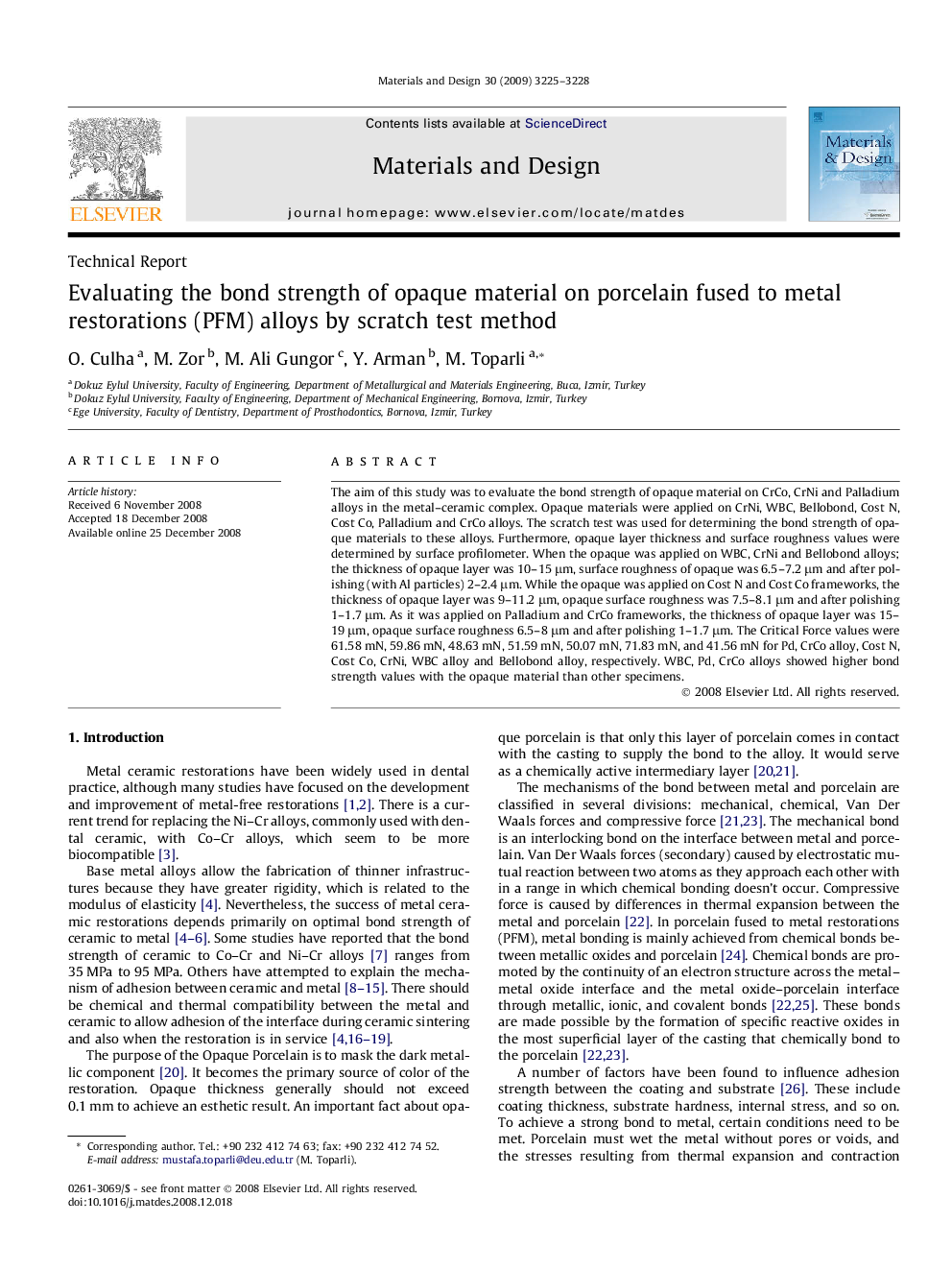| Article ID | Journal | Published Year | Pages | File Type |
|---|---|---|---|---|
| 832597 | Materials & Design (1980-2015) | 2009 | 4 Pages |
The aim of this study was to evaluate the bond strength of opaque material on CrCo, CrNi and Palladium alloys in the metal–ceramic complex. Opaque materials were applied on CrNi, WBC, Bellobond, Cost N, Cost Co, Palladium and CrCo alloys. The scratch test was used for determining the bond strength of opaque materials to these alloys. Furthermore, opaque layer thickness and surface roughness values were determined by surface profilometer. When the opaque was applied on WBC, CrNi and Bellobond alloys; the thickness of opaque layer was 10–15 μm, surface roughness of opaque was 6.5–7.2 μm and after polishing (with Al particles) 2–2.4 μm. While the opaque was applied on Cost N and Cost Co frameworks, the thickness of opaque layer was 9–11.2 μm, opaque surface roughness was 7.5–8.1 μm and after polishing 1–1.7 μm. As it was applied on Palladium and CrCo frameworks, the thickness of opaque layer was 15–19 μm, opaque surface roughness 6.5–8 μm and after polishing 1–1.7 μm. The Critical Force values were 61.58 mN, 59.86 mN, 48.63 mN, 51.59 mN, 50.07 mN, 71.83 mN, and 41.56 mN for Pd, CrCo alloy, Cost N, Cost Co, CrNi, WBC alloy and Bellobond alloy, respectively. WBC, Pd, CrCo alloys showed higher bond strength values with the opaque material than other specimens.
